Iran is not a traditional travel destination and for many reasons, a country off the beaten track. There are a lot of myths about the country and the media is a big part of it. However, travelers that made it there, including me, say it is one of their favorite countries! What was hard about traveling to Iran, though, was preparing for the trip. I had no idea what to wear, how to get a visa and what to expect. To make it easier for you to plan your trip I have put together all the essential Iran travel tips that I spend weeks researching.
This is the Iran travel guide I wish I had when I started planning my trip!
Disclosure: This post may contain affiliate links. That means that if you make a purchase through one of those links, I will get a small commission at no extra cost to you. If you have any questions about these services or products, feel free to ask me.
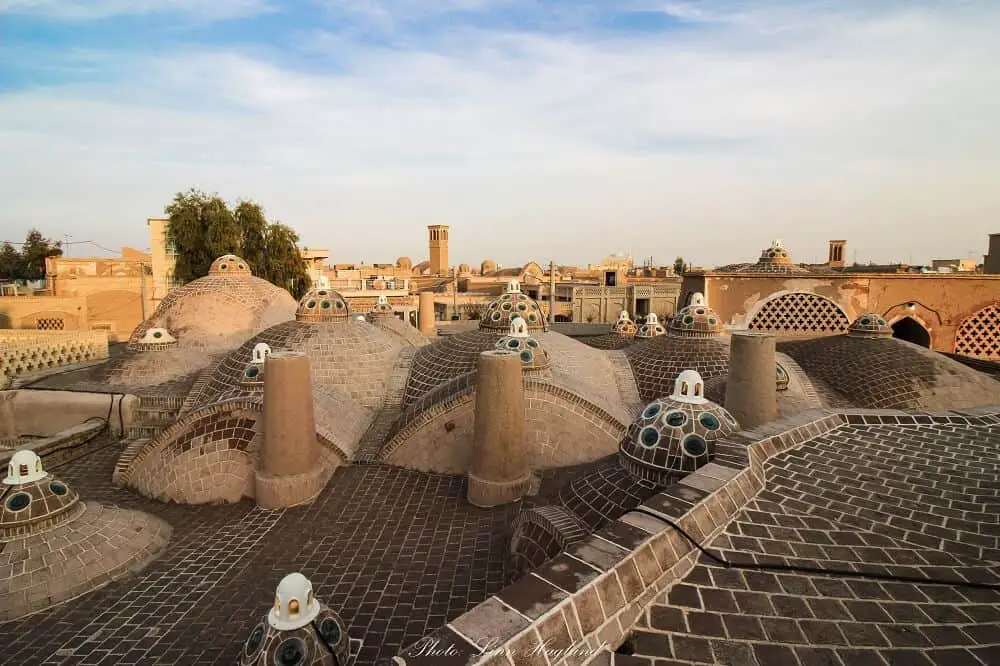
Iran travel tips: What to know before your trip
There are quite a few things to consider before your trip and during, so here are my tips for travelers to Iran that I felt were important to know.
It is based on my trip in December 2019. If you have traveled o Iran after that and have any information about things that have changed, please let me know in the comments.
I also have friends in the country, so I will make sure to update anything new I hear from them too.
How to get a visa on arrival
First of all, not all nationalities are eligible for a visa on arrival, so check out if you can get it here before you keep reading.
All US, British, and Canadian passport holders, have to go on an organized tour to get a visa to Iran. These nationalities can not get visa on arrival.
Note! Israeli passport holders are not allowed to travel to Iran and anyone with an Israeli stamp in their passport!
What you should know about visa on arrival, is that they ask you to apply for an electronic visa upfront. This often gets rejected. But don’t worry. You don’t need it to have an electronic visa at Tehran Airport. It only takes a little longer to process your visa.
I got my electronic visa rejected before my trip and freaked out! But kept calm. And researched a bit online and read from several trusted sources that it is normal that this gets rejected, but you get approved the visa on arrival anyway.
I got this confirmed by my hostel in Tehran an a friend that traveled through Iran at that very same moment. He had met other travelers that had experienced exactly that.
My experience getting my visa on arrival
So, what happened when I arrived at the airport with nothing but a rejected electronic visa (which I, of course, didn’t take with me)?
I showed my passport and proof of travel insurance (this is mandatory, otherwise they make you buy a travel insurance at the airport), filled out a form with pretty much my name and accommodation in Tehran and waited.
After a while, a uniformed man came out and had a chat with me about my expected Iran itinerary and how much money I had brought. He was more interested in my home country, though.
Then I waited another bit before I was asked to pay at another booth. It was 75 Euros with a Norwegian passport.
After a little bit more waiting, a man called me over to give me my passport with an electronic visa. There was no stamp or visual proof of the visa. This way I wouldn’t have issues entering other countries later.
The whole process took less than an hour and when I reached passport control the whole plane had already exited so I went straight through and picked up my backpack that was waiting patiently by the already stopped conveyor belt.
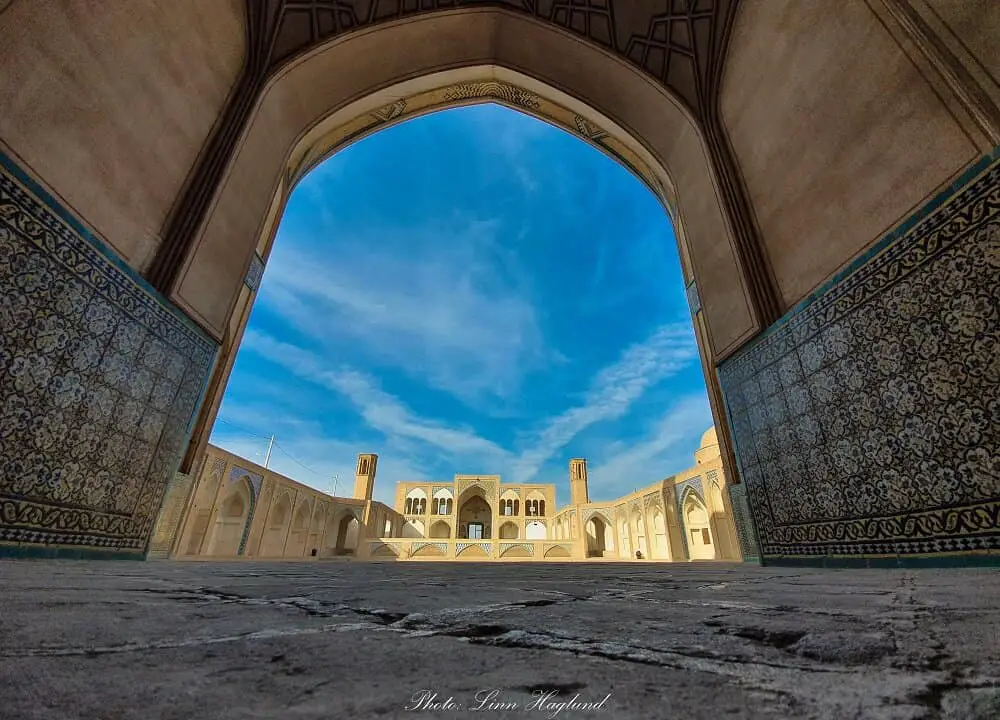
Travel insurance in Iran
This is a tricky one! If you have followed my blog for a while, you know I only use World Nomads travel insurance, because they are super easy but also because they are a socially responsible travel insurance company.
However, when I was going to fix my travel insurance for my Iran trip, they didn’t cover Iran! So, I had to start searching for other insurance companies, and I hate spending time on research. I want it to be quick and painless!
I ended up getting my travel insurance with IATI Travel Insurance.
First, I got it wrong because I am a Norwegian passport holder living in Spain. They wouldn’t accept my Spanish ID or passport number when I registered as a Spanish resident. I tried at least 5 times over the course of 3 days. Frustration!
Therefore, I registered as a Norwegian resident, which went through. The only problem was that on my insurance documents it said that I lived in Norway. I could only imagine this would turn into problems at arrival in Iran so I gave them a call.
Customer service responded in no time, asked me to buy it again as a Spanish resident (which surprisingly worked this time) and only a couple of days later I had the money from my first purchase on my account.
This experience actually turned my first negative impression with the company and I believe it must have been something wrong with the website the first time around.
I will use IATI Travel Insurance in the future if there are other destinations World Nomad doesn’t cover.
Note! You need to have proof of travel insurance printed with you to show at the airport. This needs to specify that it covers Iran. Just Asia is not enough, so make sure it says Iran on the documentation.
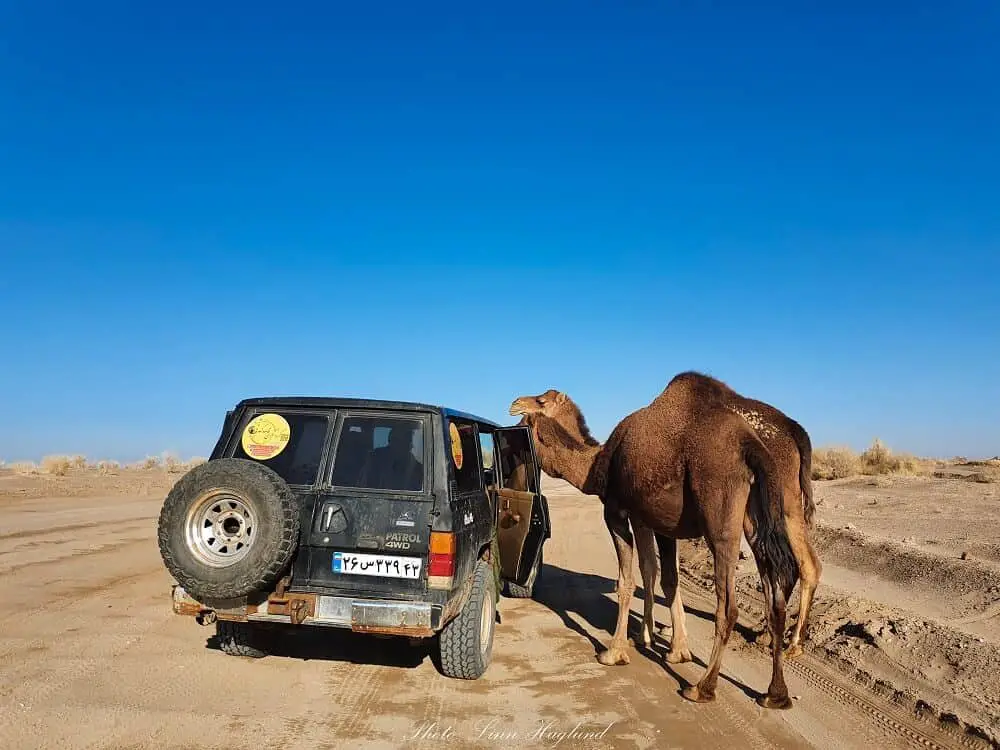
Money in Iran
In Iran, no foreign credit or debit cards work. Which means you have to bring enough cash for the whole trip. They exchange Euros, Pounds, and Dollars, though when I was there, the Euro had the best exchange rate.
I traveled on a budget, ate a lot of street food and stayed in shared dorms the whole trip. Except for the desert tours and the accommodation in the desert (25 Euros per night), everything turned out super cheap. I had brought 700 Euros (not including the 75 Euros visa fee) for 2 weeks (knowing it would be a lot, but hey! Better safe than sorry!) and only used 350 Euros.
Iran has two currencies: Rials and Toman
The real currency is the Rial. That’s what the physical money are. So, there are no physical money where it says Toman.
However, all Iranians will tell you the price in Toman. Expect certain hotels and museums etc.
Confusing? Yeah! A bit. Until you get the hang of it. I will break it down for you so that it becomes a bit easier to digest.
10 Rials = 1 Toman
100 Rials = 10 Toman
1.000 Rials = 100 Toman
10.000 = 1.000 Toman
100.000 Rials = 10.000 Toman
1.000.000 Rials = 100.000 Toman
The 10, 100, and 1000 Rials are too low, they pretty much don’t exist. The currency is all about the millions. Maybe that’s why they tried to “simplify” it.
However, when the Iranians talk about Toman, they also very often cut the thousands (last 3 zero’s) when they say the price. Therefore, make sure you double-check what they actually mean. It’s usually more than it sounds.
So, if they ask you for 100 Toman, they are probably asking for 100.000 Toman which means you have to give them 1.000.000 Rials.
READ: Best eco-friendly backpacks for your trip
Exchange rates
The exchange rate you find on the internet is also completely wrong! For this reason, I would avoid paying in Euros.
The exchange shops have the correct exchange rates and they are 100 times better than the internet rates. When I was there, 1 Euro would give me about 140.000 Rials. This would equivalent to 14.000 Toman.

How to dress in Iran
How to dress in Iran was a major headache for me before my trip. There was so much old information on what to wear in Iran on the internet that I at one point thought I had to cover up in a potato bag from top to toe. I even went out and bought a baggy long dress to cover up with so I would be on the safe side.
I couldn’t be more wrong!
Lucky for me, I did a more specific search on how to dress as a woman in Iran in 2019 and found some newer blogs on the topic.
So, I left the baggy robe at home and just bought a couple of long jumpers to complement my wardrobe. And most importantly, it saved me from embarrassment!
What to wear in Iran as a woman
So, how to dress in Iran as a woman? All women have to cover up their head with a headscarf by law, but it is ok to show hair. Many Iranian women make a bun high up on the back of their heads and let the shawl hang from there so literally half their head is visible.
The best way to figure it out is to see and learn. However, in more remote villages, the more you cover the better, as the people living there are often more bound to old traditions than the ones in the larger cities.
If you are in private homes and some hostels/hotels it is ok to take off the headscarf. However, wait until the local women do so or they tell you it’s ok.
Further, women have to cover up below elbows and ankles as well as their butt. This means that you can pull up the sleeves of your jumper to the elbows, you can wear pants that show the ankles and you can wear open sandals.
However, you should not wear a top that shows any hint of breasts, so a slightly loose top that covers your cleavage is the thing to go for.
One thing you need to know before you go! Iranians are very understanding towards tourists and if you get it wrong it’s ok.
Really! Don’t worry too much! Locals will help you out if you are struggling with your hijab. To be honest, I noticed more Iranian women that had lost track of their headscarf than tourists.
Just try your best, ask if unsure, and you’ll be fine!
What to wear in Iran as a man
Men’s dress code is much simpler. T-shirts and long pants are fine, but no tank tops, guys! Sandals are ok. If close to the beach, you can wear shorts, but not very short ones.
Dress code in mosques
Some mosques require women to wear a chador. The best way to describe it is like a sheet that covers your head down to your forehead and all your clothes down to your shoes. Mosques that require this will give you one at the entrance, usually white ones with flowers. They will help you put it on if you need it. I surely needed help with this!
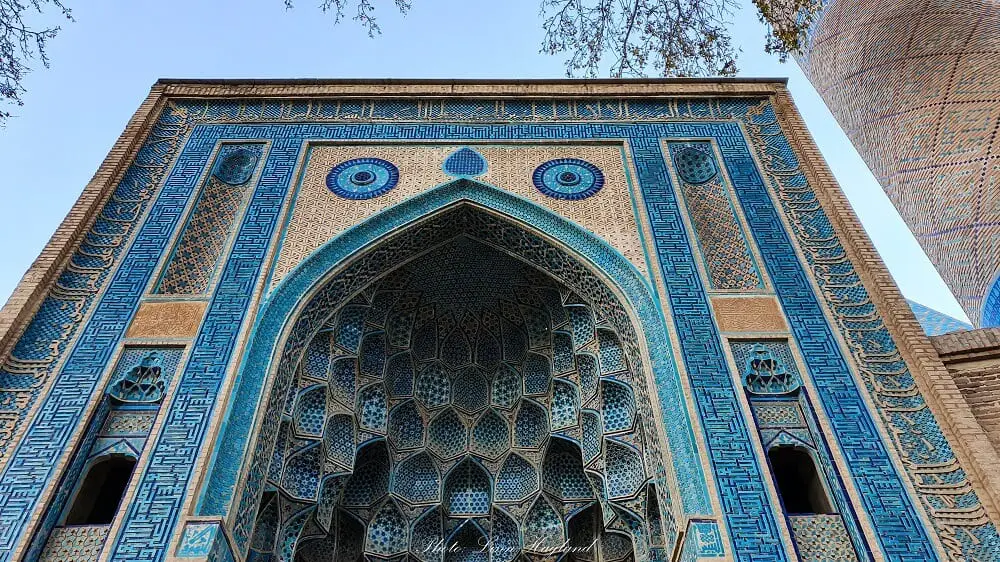
Fridays are like Sundays
Friday is the day in the week where everything closes in Iran. Think about this if you need to exchange money or travel somewhere. Make sure you exchange money on a Thursday if you are low on cash. Sunday is a normal workday.
Iranian SIM Card
When you get to Iran, one of the first things you should do is to get an Iranian sim card. I recommend Iran Cell which is the main company in Iran and they have great connection.
You can get it directly at the airport or once you get into Tehran. It only costs a few Euros and you get 2 GB of Mobile data included. They help you set up the SIM card directly in the shop so you don’t have to worry.
If you have trouble with slow loading data, you have probably received an SMS or two in Persian that you didn’t understand. Show your phone to a local and they will help you fix it.

Transport around Iran
Bus and metro
Buses are really cheap for transport from city to city. Within the big cities like Tehran and Isfahan, there are buses running most places as well as a well-connected metro. Especially the one in Tehran.
Note! Women and men are not allowed to sit next to each other on buses. Local buses have seats for men in the front and for women in the back.
On long-distance buses, you don’t have to worry, as you get a seat number and they make sure women and men are not put next to each other.
The metro has women-only carriages and carriages where both men and women can enter.
Taxi and Snapp!
However, there will be times when a taxi is the easiest and fastest alternative, especially if you’re not sure where to get off or if you’re going a bit outside the city. This is the most expensive way to travel, but don’t worry!
Iran also has an equivalent to Uber which is really cheap to use. It’s called Snapp! Download this app on your phone as soon as you get to Iran and ask someone to help you set it up.
You need an Iranian phone number for this, so make sure you have changed to an Iranian SIM card before you set it up.
You can also book a private driver to take you from a city to another. I did this from Kashan to Isfahan as I wanted to do a few stops on the way, among other places, to Abyaneh.
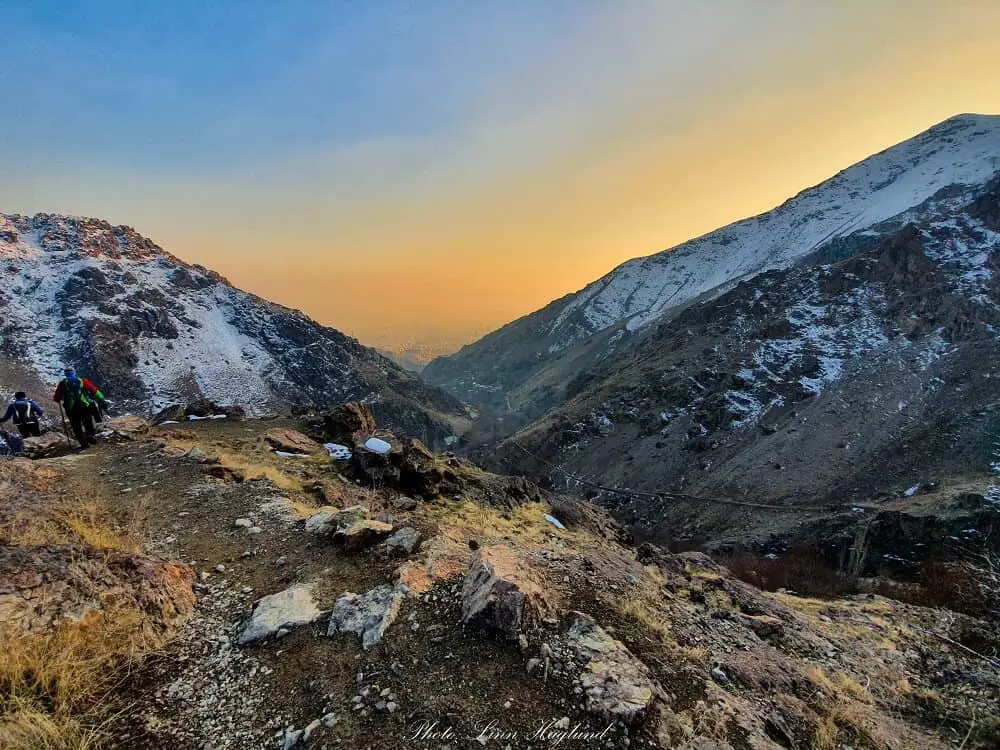
Photographing in Iran
There are so many incredible things to photograph in Iran, but there are also some strict rules so certain objects that can land you in jail!
So better be aware of those before you pull up your camera so you can enjoy traveling to Iran.
It is illegal to photograph government buildings, military buildings, protests, and critical civil infrastructure.
An example of the latter is found on the way to Abyaneh village in the province of Isfahan. There are signs along the road.
However, a good rule, is to never stop along the road to take photos. It’s always better to ask if you’re unsure.
Drones are not allowed into the country unless you have a special permit.
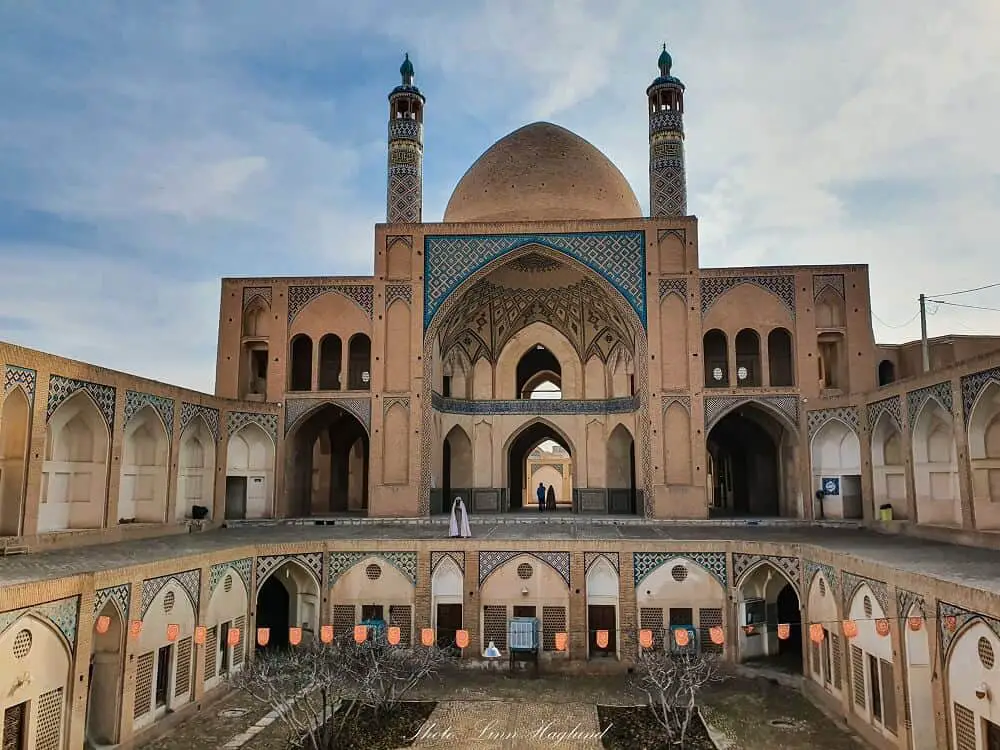
READ: How to spend two days in Garmeh Iran: A desert oasis
Final thoughts about traveling in Iran
There are a few things to be aware of before traveling to Iran, but I really hope these Iran travel tips made the process a whole lot easier for you!
If you are not convinced you should travel to Iran yet, read why I fell completely in love with Iran as a travel destination here.
If you have any updated information to add or if you had other experiences, feel free to comment below. I was in Iran at the end of 2019, but have some good friends in the country who I will consult to keep this information up to date and as accurate as possible.
Still haven’t booked your ticket to Iran? Make sure you do it here now!
Make sure you pin it for later!
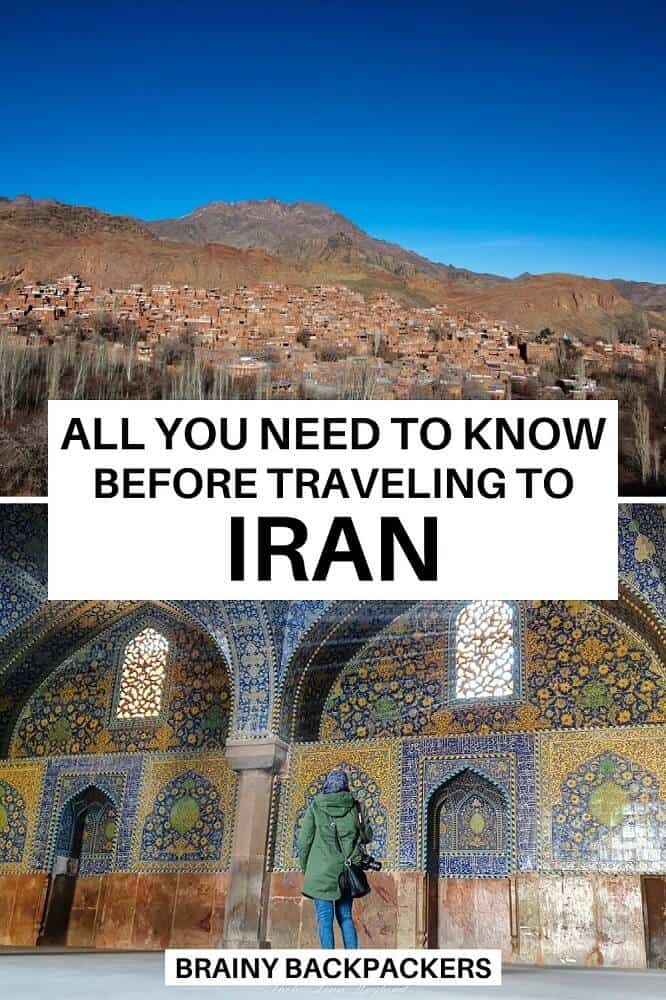
[mc4wp_form id=”1220″]

I so wish that the US passport holders didn’t have to take an organized tour. Maybe one day.
Hopefully one day in the future. But I’ve heard from Americans that have been that it was incredible anyway! Make sure you find a sustainably responsible tour company:)